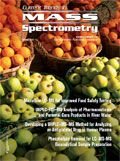Call for Papers
Spectroscopy invites researchers to submit their work for publication.
Readers interested in sharing the results of their research with more than 27,000 other spectroscopists are encouraged to submit manuscripts for review and possible publication.
Spectroscopy publishes articles dealing with practical applications of modern spectroscopic techniques and instrumentation. Contributed manuscripts commonly address any of the following topics:
- emerging techniques
- new applications of spectroscopic instrumentation
- current trends in hot research areas
- improved methods for common applications
- data-handling strategies
- solutions to sample-handling problems.
The full range of atomic spectroscopy, molecular spectroscopy, and mass spectrometry techniques is suitable for coverage in Spectroscopy.
Manuscript Preparation
Manuscripts for regular issues should be approximately 3500–4500 words long, plus figures and tables as needed, including an abstract of approximately 150–200 words. Figures and tables, along with their captions, should appear at the end of the manuscript, and figures also must be sent as separate files, preferably in JPG, TIF, PNG, or XLS format.
References. Number the literature citations in the text consecutively in order of appearance and indicate them by Arabic numerals in parentheses. Number each reference separately. Group the references at the end of the manuscript in the order of their appearance in the text, not alphabetically.
Use Chemical Abstracts Service Source Index for journal abbreviations. Use the following format for references:
(1) R. Salzer and H.W. Siesler, Infrared and Raman Spectroscopic Imaging (Wiley-VCH, Weinheim, 2009), pp. 90–103.
(2) P. Matousek, Appl. Spectrosc. 60, 1341 (2006).
Author Benefits
Publishing your work in Spectroscopy has many advantages.
Audience: The size of Spectroscopy's audience, with more than 27,000 readers, makes Spectroscopy the ideal vehicle for communicating information of broad significance to the spectroscopy community.
Peer Review: Contributed technical papers published in Spectroscopy have passed a thorough peer-review process. Our pool of referees includes the members of our distinguished Editorial Advisory Board and other recognized leaders in the field.
Special Supplements
A number of supplemental issues are planned for 2013, for which we also invite contributions. Manuscripts for the Raman, FT-IR, and ICP/ICP-MS supplements should be 2500–3000 words long, plus up to eight figures and tables, and should include an abstract of approximately 150–200 words.
Raman supplement, June 2013
Submission deadlines:
Abstracts: February 8, 2013
Manuscripts: March 8, 2013
FT-IR supplement, August 2013
Submission deadlines:
Abstracts: April 8, 2013
Manuscripts: May 8, 2013
ICP & ICP–MS supplement, November 2013
Submission deadlines:
Abstracts: July 8, 2013
Manuscripts: August 8, 2013
Current Trends in Mass Spectrometry supplement series
Our supplement series on mass spectrometry will continue in 2013 with four issues, in March, May, July, and October. Manuscripts for this series should be approximately 3500–4500 words long, including an abstract of approximately 150–200 words, plus up to eight figures and tables.
Submission Deadlines:
March 2013 issue
Abstracts: November 19, 2012
Manuscripts: January 14, 2013
May 2013 issue
Abstracts: January 21, 2013
Manuscripts: February 15, 2013
July 2013 issue
Abstracts: March 8, 2013
Manuscripts: April 8, 2013
October 2013 issue
Abstracts: May 8, 2013
Manuscripts: June 7, 2013
Contact Us
For more information about contributing to Spectroscopy, please contact
Laura Bush, Editorial Director Spectroscopy
485F Route One South, Suite 100
Iselin, NJ 08830
+1.732.346.3020
www.spectroscopyonline.com

New Study Reveals Insights into Phenol’s Behavior in Ice
April 16th 2025A new study published in Spectrochimica Acta Part A by Dominik Heger and colleagues at Masaryk University reveals that phenol's photophysical properties change significantly when frozen, potentially enabling its breakdown by sunlight in icy environments.